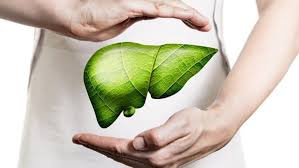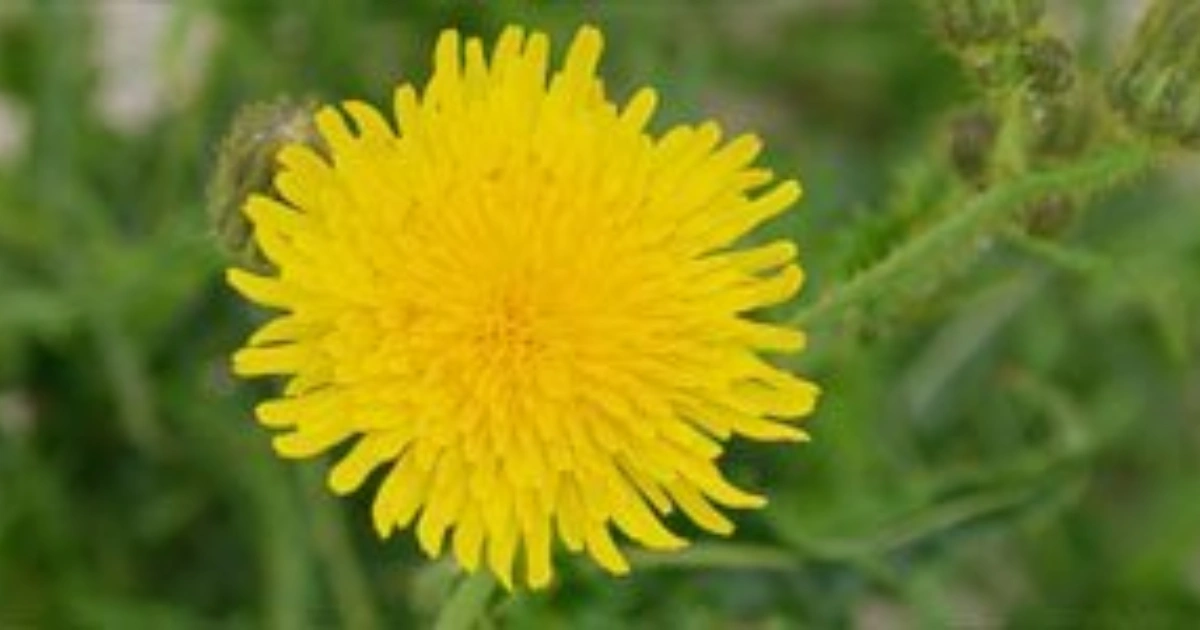Introduction
In the quiet corners of fields, roadsides, and gardens across the world, a wild and often overlooked plant grows freely: Sonchus arvensis, also known as field sow thistle, hare’s thistle, or perennial sow thistle. While many treat it as a weed, traditional medicine holds this plant in high regard for its medicinal and nutritional potential.
Let’s explore the benefits, traditional uses, and safety considerations of this remarkable wild herb.
🌿 What Is Sonchus arvensis?
Sonchus arvensis is a perennial plant from the Asteraceae family. It grows up to 1.5 meters tall and features spiny, lettuce-like leaves and bright yellow dandelion-like flowers. Native to Europe and Asia, it has now spread to many parts of the world and is often found in disturbed soils and pastures.
Despite being classified as an invasive species in some regions, this plant has long been used in folk remedies, especially in Eastern Europe, Central Asia, and parts of Africa.
🌱 Health Benefits of Sonchus arvensis
1. Anti-inflammatory Properties
Field sow thistle contains flavonoids and phenolic acids, which are known to reduce inflammation. Traditional healers have used it to calm swollen joints, soothe skin irritations, and relieve internal inflammation.
2. Liver and Gallbladder Support
In folk medicine, Sonchus arvensis has been used as a mild hepatic tonic, believed to support liver detoxification and stimulate bile production. This makes it potentially helpful in managing indigestion and sluggish liver function.
3. Diuretic Action
The plant’s leaves and stems have a mild diuretic effect, helping the body eliminate excess fluids and toxins through urine. It has been used to support kidney function and reduce water retention.
4. Digestive Aid
Fresh young leaves may help stimulate appetite and improve digestion when consumed in small amounts. Some people also use the plant to ease stomach discomfort and bloating.
5. Antioxidant Support
Like many wild greens, Sonchus arvensis is rich in antioxidants that help neutralize free radicals, potentially reducing cellular damage and supporting long-term wellness.
🍽️ How to Use Sonchus arvensis
🥗 As a Wild Edible
- Young leaves (before flowering) can be eaten raw in salads or lightly steamed.
- Add to green smoothies or soups for a bitter, nutrient-rich boost.
- The flavor is mildly bitter, similar to chicory or dandelion.
☕ Herbal Infusion
- Dried or fresh leaves can be steeped in hot water (1 tsp per cup) for 10–15 minutes.
- Used traditionally for its diuretic and liver-supporting effects.
🧴 Topical Application
- Poultices made from crushed leaves are applied to the skin to relieve insect bites, rashes, or localized swelling.

⚠️ Important Considerations
❌ Who Should Avoid It:
- Pregnant or breastfeeding women (not enough safety data).
- Individuals with gallstones or kidney issues without medical advice.
- Those allergic to plants in the Asteraceae family (e.g., ragweed, daisies).
✅ Harvesting Tips:
- Only harvest from clean, pesticide-free areas.
- Pick young leaves early in the season for best taste and nutrition.
- Avoid harvesting from roadsides or contaminated urban areas.
🌿 Sonchus arvensis in Traditional Medicine
In traditional medicine, Sonchus arvensis has been utilized for various ailments:
- Asthma and Respiratory Issues: A tea made from the roots is used in the treatment of asthma, coughs, and other chest complaints.
- Nervous Disorders: A tea made from the leaves is said to calm the nerves.
- Skin Conditions: The leaves are used as a poultice and are said to have anti-inflammatory activity.
- Breast Health: An infusion of the leaves has been used in the treatment of caked breasts.
These uses highlight the plant’s versatility and potential in supporting various aspects of health.
🌼 Identifying Sonchus arvensis
To safely use Sonchus arvensis, it’s crucial to correctly identify the plant:
- Height: Grows up to 1.5 meters tall.
- Leaves: Spiny, lettuce-like leaves.
- Flowers: Bright yellow, dandelion-like flowers.
- Stem: Hollow stems that exude a milky sap when damaged.
Ensure accurate identification to avoid confusion with similar-looking plants that may not be safe for consumption.
🧰 Tools & Materials Checklist
| Item | Purpose |
|---|---|
| 🌿 Sonchus arvensis plant | Source of leaves and stems |
| 🔪 Sharp knife or scissors | For harvesting leaves and stems |
| 🧺 Basket or cloth bag | To collect harvested plant material |
| ☕ Teapot or kettle | For brewing herbal infusions |
| 🧴 Clean cloth or gauze | For making poultices |
| 🧼 Mild soap | For cleaning tools and hands |
| 🧴 Storage containers | To store dried leaves or prepared infusions |
❌ Common Mistakes & How to Avoid Them
| Mistake | Why It Happens | How to Avoid It |
|---|---|---|
| Harvesting from contaminated areas | Plants may absorb toxins from polluted soil | Always harvest from clean, pesticide-free areas |
| Confusing with toxic plants | Similar appearance to other species | Learn to identify distinguishing features of Sonchus arvensis |
| Using without proper knowledge | Lack of information on safe usage | Consult with a knowledgeable herbalist or medical professional before use |
🌍 Regional Considerations
In regions like Constantine, Algeria, where hot and dry climates prevail, it’s essential to:
- Harvest early in the morning when the plant’s moisture content is higher.
- Avoid harvesting during peak summer months to prevent dehydration of the plant.
- Store harvested material in a cool, dry place to maintain its potency.
💬 FAQs
Q1: Is Sonchus arvensis safe to consume daily?
While generally considered safe in moderate amounts, it’s advisable to consult with a healthcare provider before making it a daily part of your diet.
Q2: Can I use Sonchus arvensis for medicinal purposes without professional guidance?
It’s recommended to seek professional advice, especially if you have underlying health conditions or are taking other medications.
Q3: How can I differentiate Sonchus arvensis from other similar plants?
Focus on the plant’s height, leaf shape, flower color, and the milky sap exuded from the stem when damaged.
Q4: Are there any known side effects?
Some individuals may experience mild gastrointestinal discomfort. Discontinue use if adverse reactions occur and consult a healthcare professional.
Q5: Where can I find Sonchus arvensis?
It grows in disturbed soils, pastures, and along roadsides. Ensure you harvest from clean, pesticide-free areas.
Conclusion
Sonchus arvensis is a testament to nature’s ability to provide healing resources in the most unexpected places. While often overlooked as a mere weed, this plant offers a range of health benefits when used responsibly. Always ensure proper identification, consult with professionals when necessary, and harvest sustainably to enjoy the gifts this wild herb has to offer.
Call to Action
Have you encountered Sonchus arvensis in your area? Share your experiences and any traditional uses you’ve come across in the comments below. If you found this article informative, please share it with friends and family who might benefit from learning about this remarkable plant.
The Medicinal Benefits of Wild Plants – Link to a detailed article on wild plants and their potential health benefits.
Anchor Text: Discover the surprising medicinal properties of wild plants
Wild Medicinal Plants
How to Identify Common Weeds for Medicinal Use – Link to a guide for identifying weeds that have medicinal properties.
Anchor Text: Learn how to identify common weeds with medicinal uses
Weed Identification Guide
Traditional Herbal Remedies for Digestive Health – Link to a resource on traditional remedies for digestive issues, including herbal plants.
Anchor Text: Explore herbal remedies for digestive health
Herbal Digestive Remedies


Maslak su kaçağı tespiti Esnek Randevu: Çalışma saatlerimize uygun bir randevu oluşturdukları için teşekkürler. https://laziofansclub.com/read-blog/4438
Click This Link Forum Tor dla polskojezycznych
hop over to these guys https://vitalityshop.space/ita/slimming/premium-shiitake-weightloss-slimming-capsules/
aprender mas https://vitalsphere.space/per/varicose-veins/calmano-capsules/
useful source coinbase login
visit homepage coinbase login
check out this site coinbase login
Хотите найти подробную информацию для нумизматов ? Наш сайт предлагает исчерпывающие материалы для изучения монет !
У нас вы найдёте редкие монеты из исторических периодов, а также драгоценные предметы .
Изучите каталог с характеристиками и высококачественными фото , чтобы сделать выбор .
серебряные монеты
Для новичков или эксперт, наши статьи и гайды помогут расширить знания .
Не упустите шансом добавить в коллекцию лимитированные монеты с сертификатами.
Станьте частью сообщества энтузиастов и будьте в курсе последних новостей в мире нумизматики.
look at this web-site coinbase login
check out here coinbase login